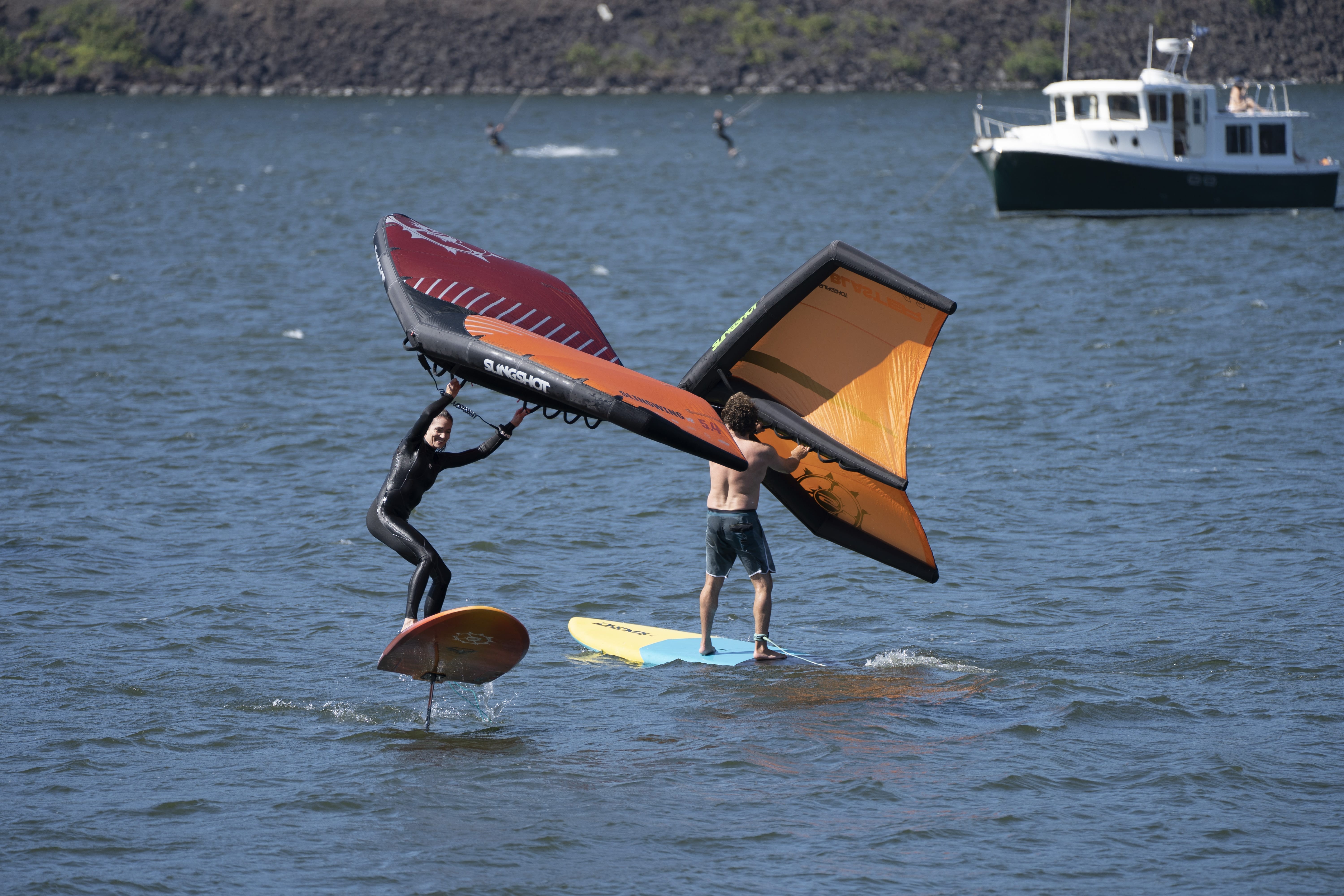
Wing Surfing, Wing Foiling, Winging, Wingding, Wingsurf, Wingin’ It, Hand-held inflatable, Windsurf Kite??
What we are actually going to settle into calling it is yet to be determined. Thus far the most popular are terms are “Wing Surfing” or “Winging”.
Either way this newest craze is quite the phenomena. Using a handheld inflatable wing to give yourself the freedom to power over the water on a board, usually with a hydrofoil.
By relying on the wing’s performance, you can take your surfing, SUP, or wake style to a whole new level. The only drawback is that with your wing at the mercy of the wind, you will have to know what the forecast is and get the right wing size for your conditions. See our extensive selection of wings here.

Most boards used while wingsurfing are larger Standup Paddle Board (SUP) style boards that offer the buoyancy needed to get started. As one progresses, along with adequate wind to power your movement, one can use a smaller board. The inflatable wing provides the propulsion across the water. With the forward speed the hydrofoil then creates lift that brings the board out of the water.
Wing Surfing is a combination of windsurfing, kiteboarding, hydrofoiling, standup paddleboarding and more. Windsurfing involves a sail teathered to a surf board by a mast and kiteboarding involves a steerable kite that looks “C” shaped approximately 80 feet (24 meters) above or to the side of the rider.
The main components of the “wing” sport include:

The Wing Surfing Learning Curve for Beginners
After you pump up your wing for the first time, before you head out to the water, you’re going to need to get accustomed to flying it.
-When learning to wing surf, you should practice in various steps.
The process is to:
1.) Start with flying the wing. Practice on the beach or somewhere with the clean wind. Focus on holding your front arm out straight and up to one side. Find the correct handles that offer the most comfortable arm position. Work on pivoting the backhand to adjust power. You should have a light grip on both hands and try to feel a stable consistent pull where both hands are not holding too much load. Practice switching grips and flying on both sides. You can work on running or walking with the wing.
2.) Learn to Foil. Learning to foil is easiest behind a jet ski or boat at lower speeds. We like to teach on a higher volume paddleboard style foil board SUP behind a jetski. Learning to foil separately from flying the wing is helpful in that it takes one more thing out of the equation.
3.) Put your wing flying skills together with your foiling skills. Start by climbing on your board and making your way to your knees. Work your way up your leash to grab your wing. Practice tracking in one direction on your knees with your wing. Once you get the feel of this, you can practice getting to your feet. If it’s really windy you should be able to get up on foil pretty easily. If the wind isn’t very strong or you’re on a smaller underpowered wing, you may have to practice pumping the wing and foil at the same time get going. As you progress and spend time with this you’ll eventually get the hang of it and can focus on tracking upwind to make it back to where you started. The next step would be to practice jibes and/or tacks.
What can you use to wingsurf or “wind wing”?
Most people start out on a Stand Up Paddleboard SUP that has a (hydro) foil, which essentially turns it into a foil board. SUP’s are great because they give you the extra stability you need when learning.
Between the power of the wind, the water, the wing surfer, and the wrist leash, most people starting out feel like there is a lot going on. But the reality is that if you can learn to ride a bike you can learn to wing surf as well.
A big surprise for people is how much power they can get with the wing. The power comes from the wind of course and generates the forward momentum.
It the power is too much, it can be hard to manage the wing surfer.
How much wind do you need to wing foil? In general, the minimum amount of wind you need to wing surf is 12 mph. It really depends on the size of the wing and the power of the wind.
As you can imagine the wing can become harder to manage if it gets too large. That is why when you select the wind weapon of your choice, you’ll need to know what the average wind speeds are in your area.